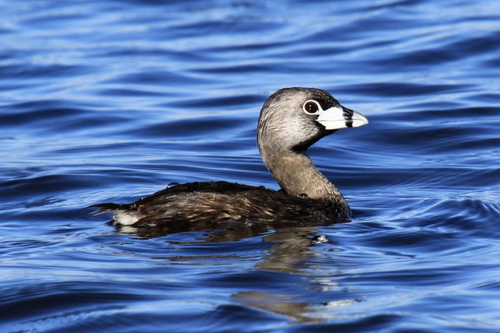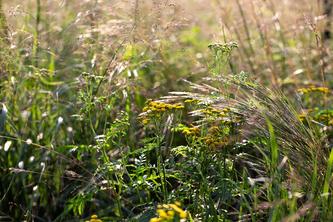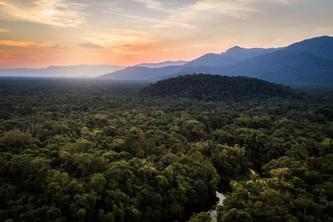
Human activity surrounding the Laurentian Great Lakes basin has significantly degraded coastal wetland habitats, resulting in severe marsh bird population declines and reduced coastal resilience to changing environmental conditions.
Given the need to conserve remaining coastal wetlands for wildlife and people, National Audubon Society led a large collaborative effort to identify the most important U.S. Great Lakes coastal wetlands for 14 marsh bird species. Audubon developed a spatial prioritization tool while the Natural Resources Research Institute (NRRI) at the University of Minnesota Duluth led the effort to collect bird data. Their findings were recently published in the journal Biological Conservation.
Evaluation of the drivers of marsh bird occurrence and abundance revealed that open water, herbaceous wetland, latitude, longitude, and impervious surface were the most important predictors across focal species. The high-priority wetlands for marsh birds (defined as grid cells ranked in the top 20%) occurred along the shores of eastern Lake Ontario, western Lake Erie/St. Clair, Saginaw Bay, Green Bay, northern lakes Michigan and Huron, and western Lake Superior.
However, less than half (42%) of high-priority coastal wetlands across the Great Lakes basin are currently under some level of protection, with Lake Ontario priority wetlands being the least protected (25%).
The researchers’ findings represent an opportunity to improve coastal wetland conservation in a region where wetland loss and degradation continue to threaten marsh bird populations and the integrity of one of the world's largest freshwater ecosystems.
“The spatial mismatch between ecological value and protection status is an opportunity to improve the conservation of marsh birds in a region where wetland loss and degradation remain high, “said Joanna Grand, Senior Scientist at National Audubon Society. “We recommend that areas identified as high-priority but currently lacking protection be considered in future conservation efforts.”
For example, it might be cost-effective to protect areas identified as high value for marsh birds with low land-use conflict, such as wetlands along the northern shore of Lake Michigan. On the other hand, restoration and land-sharing strategies could be directed towards areas with high conservation value that are threatened by intensive anthropogenic activity, including those wetlands close to urban centers such as Green Bay, Wisconsin and Detroit, Michigan.
“Overall, our findings provide insights into species-specific habitat associations, decision support for regional wetland conservation planning, and a generalizable approach for prioritizing coastal wetlands for marsh bird population persistence,” said NRRI Ornithologist and Professor Emeritus Gerald Niemi. “This will help maintain valuable ecosystem services for the benefit of coastal communities.”
NRRI has been involved in data gathering on breeding birds throughout the Great Lakes since the early 2000s with funding primarily from the U.S. Environmental Protection Agency, both nationally and through the Great Lakes National Program Office.
NRRI scientists have led the effort to gather the bird data and coordinate with Bird Studies Canada, University of Wisconsin-Green Bay, Central Michigan University, and SUNY Brockport over the past ten years. Breeding bird data gathered from 2011-2017 formed the basis of the data analyzed by the National Audubon Society to prioritize the restoration and protection of Great Lakes coastal wetlands in the U.S. Over fifty percent of the historical wetlands in the Great Lakes have been lost and many that remain have been severely degraded.
It is the intent of the NRRI to continue to actively work on gathering data and participate in the restoration and protection of coastal wetlands in the Great Lakes, including those in Duluth and along the North Shore of Lake Superior.
Support for this research was provided by the Great Lakes National Program Office of the U.S. Environmental Protection Agency, Birds Canada, S.C. Johnson, and The Bluff's Hunting Club.
- Categories:
- Agriculture and Environment
- Research





